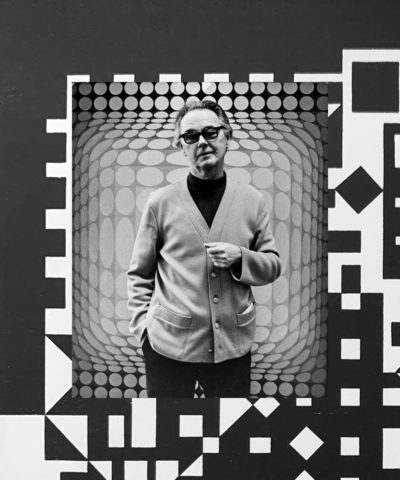
Basic Info
Name: Victor Vasarely
Date of Birth: April 9, 1908
Date of Death: March 15, 1997
Country of Origin: HU
Description
Victor Vasarely was a Hungarian-born abstract painter, widely viewed as one of the leading figures in the Op art movement. His geometric works incorporate optical effects and technical precision to express his love of graphic statements: as he writes, “A contemporary painter can no longer be content with painting pretty little pictures. He must beautify the details of the modern, grandiose environment, since people need plastic forms same as they need sunlight, oxygen or vitamins.”
Vasarely studied medicine for a short time before abandoning it in 1927 to pursue painting. He studied at Sándor Bortnyik’s private art school, the Muhely, then widely recognized as the center of Bauhaus art in Budapest. His time at the Bauhaus school was greatly influential to his style, as were constructivist and surrealist artists like Salvador Dalí.
In 1930, Vasarely left Hungary to settle in Paris, where he would live until his death in 1997. Initially, he obtained work as a graphic designer and creative consultant for an advertising agency, but went on to establish himself as an artist working in various media. He is best known for his grid-like paintings and sculptures of the 1960s onwards: a 1965 New York exhibition (“The Responsive Eye“) at MoMA solidified his international reputation and brought Op art further into the spotlight.
Vasarely’s pieces “play with the reader’s sense of visual form by creating illusory, flickering effects of depth, perspective, and motion” (Art Story). As early as the 1950s, he was using preliminary scale drawings for his works, which he called “programs”: he created an artistic “alphabet” composed of a color system and the linear forms and shapes to which it would be applied. He was fascinated by technology and early computing systems, and his artistic process is in many ways closely related to the computer art of today.
Vasarely continued to work well into his seventies, and was the recipient of many international honors. Multiple dedicated museums were opened in France and Hungary, and his works are held in many institutions worldwide. He died in Paris in 1997, aged 91 years.
